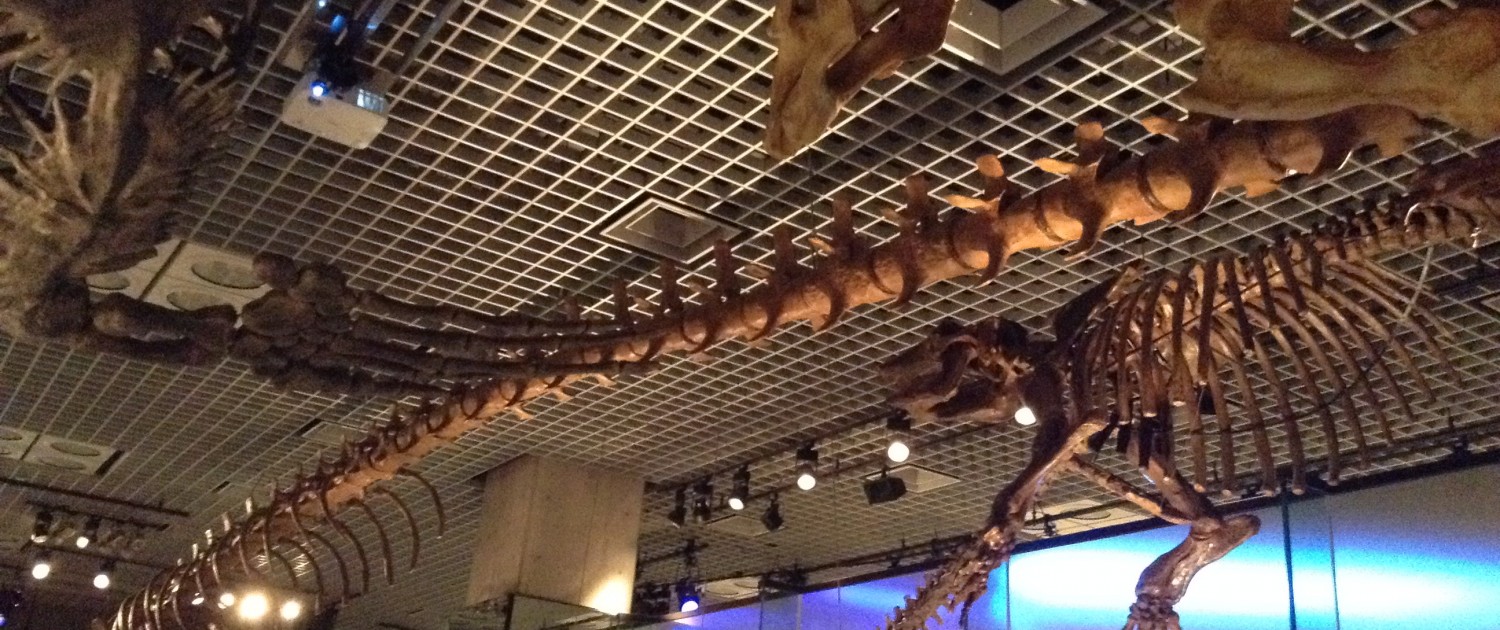A small legend at the National Museum of Nature and Science in Ueno
Last Friday, I was (yet again) strutting about the all-famous Ueno Park. The Park, I should mention, consists largely of well-groomed lawns and copses, which surround walkways leading to a number of shrines and popular attractions, such as Ueno Zoo, and various art, history, and science museums. This time though, unlike the last, I wasn’t there for an art exhibition, but for the National Museum of Nature and Science in Ueno.
By the entrance, a life-size figure of a blue whale reared its head towards the sky, like a monument to the colossal size of the museum. After wandering about echoing halls for upwards of five hours, I had only cleared about three-quarters of the exhibitions, though I had been going at a rushed pace, with often no more than a cursory glance at the explanatory panels. Dinosaur skeletons, a 360-degree movie depicting the Big Bang and early life on Earth, and a complete history of clocks, cameras, and space itself were only a fraction of what the place had to offer.
The exhibition that drew my attention the most, however, focused on human history. A section of the exhibit had been dedicated to the development of the Japanese islands—archipelagians, in various stages of evolution, were frozen and put into glass boxes. It began with likenesses of the humans who lived during the early, half-mystical Jōmon or Cord-Pattern Period (dated from about 12,000 to 300 BCE, and so named for its pottery, which was decorated with imprints of straw rope) and moved gradually up to the modern period. At the end of the line stood a case with one of its sides missing, into which visitors were invited to stand and claim their rightful place in history.
A corner of the exhibit featured animals that were historically important to the island—containing the usual oxen, horses, and fowl. However, standing out among the stuffed figures was a beautiful white Akita Inu, with a single name inscribed on its placard: Hachiko. Hachiko, in life, was a dog known for his tender loyalty to his owner—which ran so deep that even after Professor Ueno passed away, for the next nine years, Hachiko continued to appear at the station exactly when the professor’s train was due. His bronze statue still stands vigil outside of Shibuya Station to this day; his actual body, as mentioned, is preserved in the National Museum.
Nowhere near the figure, though, was any sort of explanation of the life of Hachiko—just the name on the placard. Though I raised my eyebrows at this at first, I figured that it was probably because in Japan, it’s near inconceivable there could exist any person (who doesn’t live under a rock) who hasn’t heard of the story of Hachiko. Certainly, I knew and loved the tale so much that I stood in front of Hachiko’s case for a good five minutes, hardly daring to breathe.
I felt like I had come face-to-face with a small legend.

